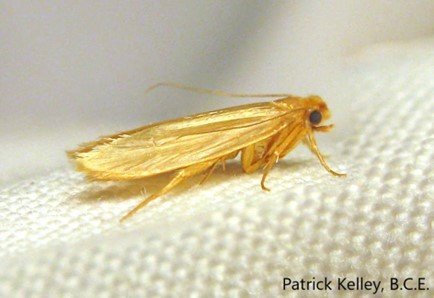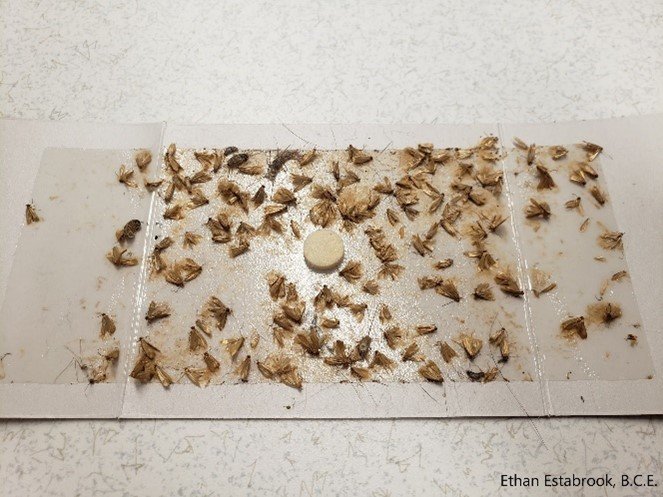Clothes Moth History and Damage
By Ethan Estabrook, BCE, Research Entomologist and Product Support, Insects Limited
Clothes moths have been a serious insect pest for thousands of years causing damage to clothes, furnishings, and other items made from animal materials like wool, fur, and feathers.
Some of the earliest references to them can be found in the Bible, such as in Isaiah 51 verse 8 “For the moth will eat them up like a garment; the worm will devour them like wool” and in Matthew 6 verse 19 “Do not store up for yourself treasures on earth, where moth and rust destroy”.
Other early references are included in early Greek and Roman literature who describes moths attacking the feather plumes of combat helmets.
Clothes moths were likely spread throughout the world by early sea travel which is illustrated by the diary of a naturalist on board the HMS Challenger in the 1870s who wrote “Clothes moths were a terrible pest and destroyed several garments for me in my cabin.” Between 1957 and 1977 webbing clothes moths were found infesting products on cargo ships including dried blood, feathers, bone meal, mohair, sheepskin, camel hides, and whale meat. Bird nests and other keratin-rich food sources such as fur and debris in animal burrows could have been the original habitat of clothes moths before they invaded man-made environments.
Today, clothes moths are found infesting items in households, museums, grain storage facilities, pet food warehousing, and other structures that work with wools, furs, and feathers.
It is difficult to calculate estimates of the financial damage clothes moths contribute. In the 1950s, Britain officials calculated clothes moth damages to be around 6 million dollars annually, with 80% of all households stating that they took some level of precautions against clothes moths.
In the 1980’s the United States, where it is found in every state, clothes moth damage to wool-contained textiles was estimated at 200 million dollars annually. More recent estimates show clothes moth damage around 1 billion dollars each year in the United States alone. The materials and items often attacked by clothes moths include wool, fur, feathers, animal hides, taxidermy, upholstered furniture, piano felt, natural bristles, garments, and textiles, particularly those soiled with food, sweat, or urine.
Clothes moth larvae cause all the damage to these items as the adult moths are unable to feed. Clothes moth larvae damage items by chewing holes, producing webbing tubes, and soiling items with their fecal pellets. Damage is usually concentrated on soiled areas of materials and in dark folds and creases. Items are more likely to be attacked if left in undisturbed and dark areas such as basements, attics, and closets. Large larvae CAN chew holes in synthetic materials, which they cannot digest if those materials are soiled or stored near more munchable items like wool. Fabrics composed of natural materials mixed with synthetic fibers have also become more popular. Clothes moth larvae are quite capable of selecting out and feeding on the wool fibers in these mixtures.
It is important to Start with the Insect First!
Identifying the clothes moth species and understanding their biology is the first step to an effective integrated pest management program. Once the clothes moth has been identified, inspect areas for ideal food sources such as wools, furs, or feathers.
Pheromone lures and traps are great tools to monitor and help identify the source of infestation. Finding and treating the source can help pest management professionals solve a difficult pest problem to help protect household items like your favorite wool sweater to museum artifacts of historical importance.
If you have any clothes moth or pheromone questions, you can contact me at E.Estabrook@InsectsLimited.com.
Insects Limited, an Insect Pheromone Company
Insects Limited, Inc. researches, tests, develops, manufactures and distributes pheromones and trapping systems for insects in a global marketplace. The highly qualified staff also can assist with consultation, areas of expert witness, training presentations and grant writing.
Insects Limited, Inc. specializes in a unique niche of pest control that provides mainstream products and services to protect stored food, grain, museum collections, tobacco, timber and fiber worldwide. Please take some time to view these products and services in our web store.



